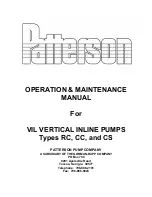
10
GEO16-501.4
INSTALLATION
Wiring
CAUTION
Ensure that the supply voltage to the appliance, as indicated
on the serial plate, is not 5% less than the rated voltage.
WARNING
1. Disconnect power supply before making wiring
connections to prevent electrical shock and equipment
damage.
2. All appliances must be wired strictly in accordance with
the wiring diagram furnished with the appliance. Any
wiring different from the wiring diagram could result in a
hazard to persons and property.
3. Any original factory wiring that requires replacement must
be replaced with wiring material having a temperature
rating of at least 105°C.
4. Ensure that the supply voltage to the appliance, as
indicated on the serial plate, is not 5% greater than rated
voltage.
Installation of wiring must conform with local building codes,
or in the absence of local codes, with the National Electric
Code ANSI/NFPA 70 - Latest Edition. Unit must be electrically
grounded in conformance to this code. In Canada, wiring must
comply with CSA C22.1, Part 1, Electrical Code.
Electric wiring must be sized to carry the full load amp draw of
the motor, starter and any controls that are used with the unit.
See Table 13.1 for electrical data.
Any damage to or failure of units caused by incorrect wiring of
the units is not covered by warranty.
Terminal Strip Connections
The terminal strip connections are designed to clamp down on
the wires. To properly connect the wires to the terminal strip:
1. Push a small flat-head screwdriver into the square hole on the
terminal. Press firmly until the screwdriver hits the back stop
and opens the terminal (see Figure 10.1).
2. Remove approximately 3/8" of insulation from the end of
the wire and push the stripped wire into the oval hole in the
terminal.
3. Remove the screwdriver. Pull on the wire to make sure that it
is securely clamped in the terminal.
4. Make sure that the terminal clamp is in contact with bare wire
(insulation removed).
Figure 10.1 - Terminal Strip
Unit Power Connection
Refer to the unit serial plate for unit voltage and phase.
Available power must be the same as indicated on serial plate
Remove access panel and electrical box cover. Using Unit
Power knockout, route power lines through unit and into main
electrical panel. Connect line voltage wires to the L1 and L2 lugs
of the contactor. Consult the unit electrical data on the serial
plate for correct overcurrent protection sizing. Connect ground
wire to ground lug in electrical panel. Replace electrical box
cover and access panel prior to unit startup.
Hot Water Generator Pump Wiring
The domestic hot water pump is not wired in the factory to
prevent pump burnout in case the unit is powered before the
domestic hot water tank is plumbed or full of water. Refer to the
control manual and wiring diagram for instructions on enabling
the pump.
Transformer Wiring
The system supplies the power to the controller via a 24V
transformer. On 208-230V systems, the transformer comes
factory wired for 230V operation. If the unit is to be powered
with 208V, the transformer must be wired for 208V. A terminal
strip with a jumper is provided for easy field configuration (see
Figure 11.1). Refer to the wiring diagram provided with the unit
for for details.











































